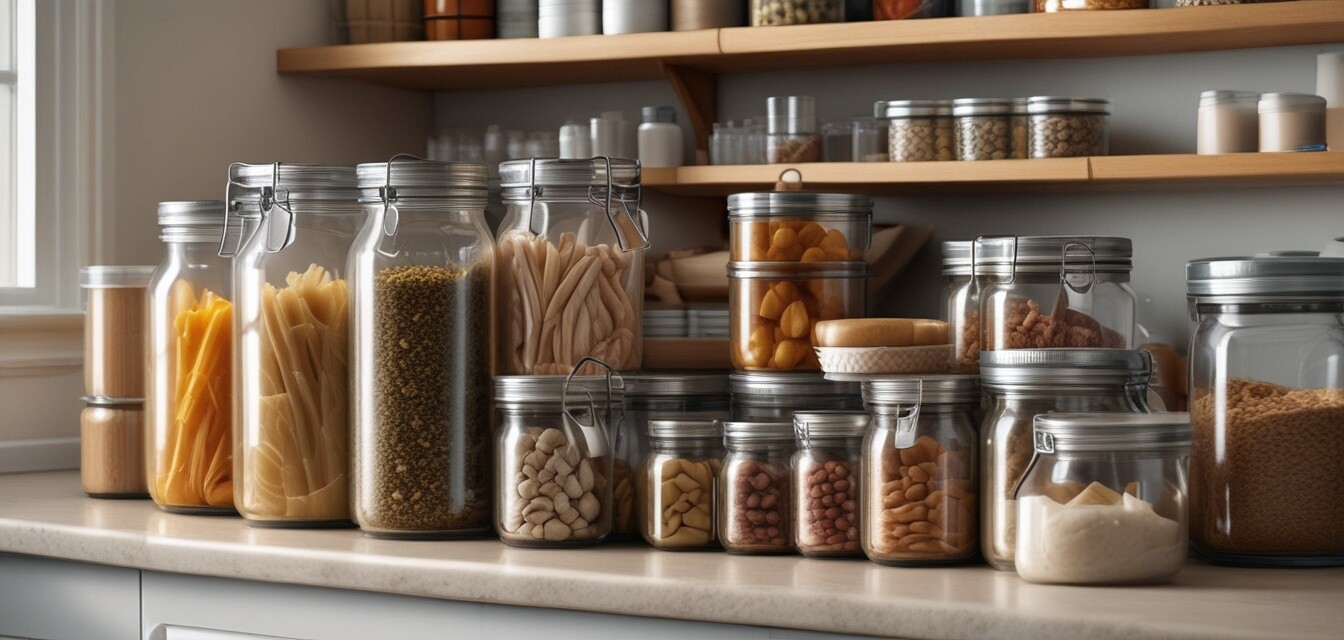
Keeping Your Ingredients Fresh: Food Storage Tips
Key Takeaways
- Understand proper storage methods for different ingredients.
- Utilize food storage containers to maximize freshness.
- Implement techniques to reduce food waste.
- Learn how to label your ingredients effectively.
Proper food storage is critical for maintaining the quality and longevity of your ingredients, ensuring that you can whip up delicious meals whenever inspiration strikes. By understanding how to store various foods correctly, you can significantly reduce waste and make the most of your ingredients. In this guide, we will cover essential food storage tips that will help you keep your kitchen stocked with fresh and flavorful ingredients.
Understanding food storage basics
Food storage is not just about putting items away in any container; it's about using the right methods to extend shelf life and preserve quality. Here are a few fundamental principles to keep in mind:
- Know the recommended temperatures for different foods.
- Use the right containers for specific ingredients.
- Stay organized to make a meal prep easier.
Common food storage methods
| Food Type | Recommended Storage Method | Ideal Temperature |
|---|---|---|
| Fruits | Keep in a breathable container, refrigerate if necessary | 32°F to 55°F |
| Vegetables | Store in perforated bags or containers | 32°F to 40°F |
| Meats | Seal tightly and freeze or refrigerate | 32°F to 40°F, freezing at 0°F |
| Dairy Products | Refrigerate in original containers | 32°F to 40°F |
| Grains & Beans | Store in airtight containers in a cool, dark place | Room temperature |
Choosing the right storage containers
Selecting the right containers for food storage is essential. Here are some popular options:
- Glass containers: Great for reheating in the microwave and don’t absorb odors.
- Plastic containers: Lightweight and often microwave-safe, but check for BPA-free options.
- Vacuum-sealed bags: Excellent for long-term storage and reducing freezer burn.
- Reusable silicone bags: Eco-friendly and flexible, ideal for snacks or marinating items.
Labeling your ingredients
Properly labeling your ingredients can save you a lot of hassle. Here’s how to do it right:
- Use clear, waterproof labels.
- Include the date of storage for tracking freshness.
- Specify the contents if they are not visible.
- Be consistent with your labeling system to avoid confusion.
Techniques to reduce food waste
Reducing food waste starts with mindful storage practices. Here are some quick techniques:
- Plan your meals for the week to avoid buying excess ingredients.
- Use FIFO (first in, first out) to consume older ingredients first.
- Store leftovers in clear containers to keep them visible.
Tips for specific ingredients
Different ingredients require different approaches to storage. Here are some tailored tips:
| Ingredient | Storage Tip |
|---|---|
| Herbs | Store in a jar with water like a bouquet |
| Bread | Keep in a breadbox or seal in a plastic bag |
| Eggs | Keep in the original carton in the fridge |
| Butter | Store in a butter dish and keep it refrigerated |
Conclusion
By adhering to these food storage tips, you can ensure that your ingredients remain fresh and flavorful for longer periods. Remember to choose your storage containers wisely, label your items effectively, and adopt techniques to minimize waste. For more advice on kitchen products, check out our Buying Guides section. Embracing effective food storage can transform your cooking experience and improve the quality of your meals.
Beginner's Tips for Food Storage
- Always wash your produce before storing them to remove dirt and pesticides.
- Invest in a set of good quality containers that can save space in your kitchen.
- Don't overstock your pantry; buy what you need for the week to avoid spoilage.
Pros
- Helps maintain ingredient freshness
- Reduces food waste
- Enhances meal prep efficiency
Cons
- Requires initial investment in quality containers
- Can be time-consuming to label and organize